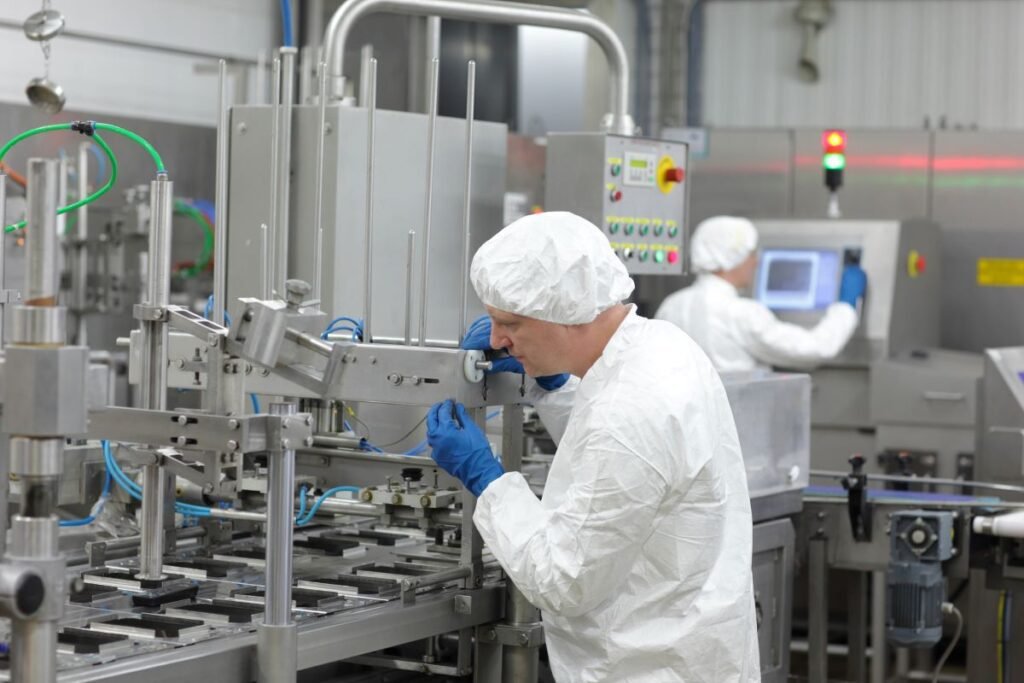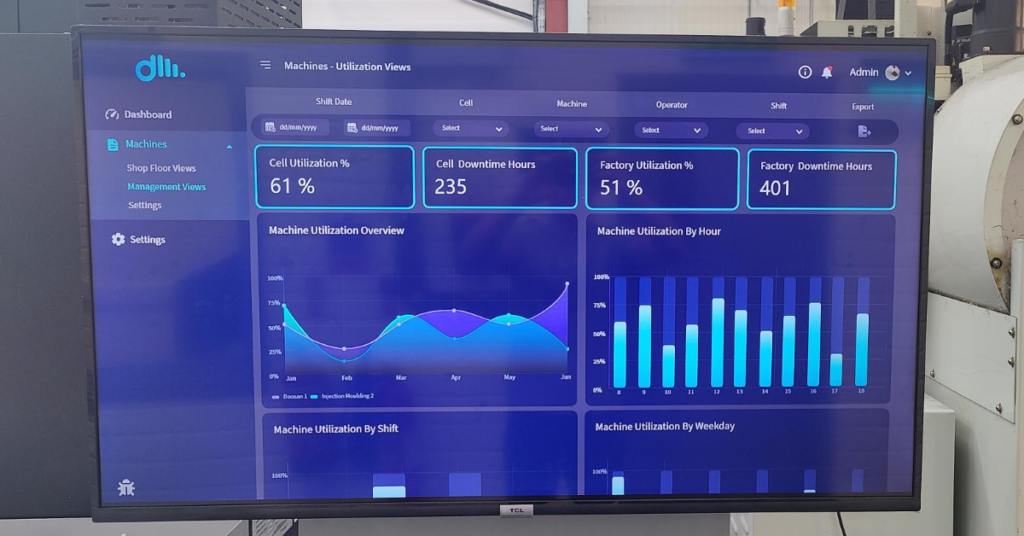The profitability of manufacturing operations depends heavily on the ability to keep fixed and variable costs to a minimum. How do you reduce costs in manufacturing? Where do you look for cost reduction opportunities? With a properly integrated machine monitoring system, you can find cost reduction opportunities, and prioritise them using real data.
This article will help you understand:
- What are the different types of costs in manufacturing?
- How to reduce manufacturing costs with machine monitoring
For a comprehensive view of machine monitoring systems, including what they do, the benefits they provide, and how to implement, see The Complete Guide to Machine Monitoring Systems

What are the different types of costs in manufacturing?
To understand how machine monitoring software can help reduce manufacturing costs, it can be beneficial to review definitions of manufacturing costs in general. From a financial accounting perspective, costs for all manufacturing operations typically break down into “fixed” costs and “variable” costs. However – most manufacturing managers & operators wouldn’t use the terms “fixed” costs versus “variable” costs.
These are the types of manufacturing costs most managers and operators use in their daily lives:
- Direct materials
- Direct labour
- Overheads
What are Direct Materials in Manufacturing?
Direct Materials, “materials” or “raw materials” are the inputs in the manufacturing process – the components or ingredients that are needed to create the final products. Materials are considered a “variable” cost in manufacturing because if you want to produce more product, you need more ingredients. Because of this, your materials costs go up and down with the total amount of goods that you intend to produce.
Materials typically represent the largest of the variable costs in manufacturing.
What are Direct Labour Costs in Manufacturing?
“Direct Labour” refers to the people that have direct responsibility over operating the machines or otherwise making the products that are produced in a manufacturing operation.
A manufacturing organisation might have other employees, who help to market and sell the operation’s services, or who maintain the accounting books for the operation. As these people do not directly contribute to the production of manufactured goods, they are excluded from direct labour. These people are sometimes referred to as “non-operational” or “non-direct” workforce.
Direct labour is another example of a variable cost in manufacturing. Costs to employ machine operators rise and fall, depending on the total amount of output a manufacturing operation produces.


What are Overhead Costs in Manufacturing?
“Overhead” costs in manufacturing are costs that an operation must undertake regardless of the total amount of product that is produced. Overhead costs are those that pertain to the maintenance of the manufacturing operation as an organisation, and as an entity. As such, “overhead” costs in manufacturing are synonymous with “fixed” costs.
Anything involved with ownership or rental of the property on which the manufacturing occurs is considered overhead. For example, costs to rent or debt payments on the mortgage for a manufacturing property would be considered overhead. Likewise, any debt payments for the machines on your shop floor would also be considered overhead. Your manufacturing operation must include machines, and these machines are usually purchased with debt. Debt payments on these machines must be maintained, regardless of how much they produce.
Payments to maintain insurance at a manufacturing plant are likewise considered part of overhead costs. Insurance payments must be maintained regardless of the total amount of goods produced. Energy is another example of an overhead cost in manufacturing.
All manufacturing operations make use of machines to produce goods, and all machines require some form of energy to operate. Therefore, all manufacturing operations require energy, in order to – literally – keep the lights on.
How to Reduce Manufacturing Costs with Machine Monitoring
In this section we’ll explore the different types of costs discussed above, to see how machine monitoring software can help you find ways to save money. Machine monitoring can help you plan production more efficiently, resulting in less scrap. This type of materials utilisation can help you to produce more product from the same amount of materials, leading to lower costs-of-goods-sold.
For example, if you are monitoring the speed of the spindle during an operation you may notice the speed is above the recommended maximum of a given task. This can result in the temperature of the point of contact between the cutting tool face and material increasing which can lead to scrapped units.


Reducing Labour Costs in Manufacturing through Machine Monitoring
Through machine monitoring, you can find ways to deploy your existing force more efficiently. You may find ways to change the manufacturing order of operations, cutting down operator hours. Or, your employees themselves can use machine monitoring systems to analyse their own productivity versus their peers. And in doing so, they may find ways to improve their own performance.
You can see a case study here for Optimizing Overall Asset and Employee Efficiency With a machine monitoring system, you can analyse your direct labour efficiency in different areas of your operation. In doing so, you may find efficiencies that help you forego unnecessary additional hires.
How to Reduce Overhead Costs in Manufacturing with Machine Monitoring
The main way that machine monitoring can help you reduce fixed costs is by helping you forego unnecessary capital expenditures. It is common in manufacturing to feel like you need more equipment to supply more finished products. But is that in fact the case? Or do you simply need to use the machines you have more efficiently? A machine monitoring system can help you answer this question.
For example – Say that during your typical day shift operation, you’re able to produce 500 products from running 10 machines over the 10-hour shift. If an additional order came in that required you to produce an additional 100 products over the same shift you’d likely conclude that you’d need more machines.
But what if you found, through a machine monitoring system, that your 10 machines were only making product for an average of 5 hours over the course of the 10 hour shift? If that were the case, then you could forego the purchase of additional machines through ensuring your existing machines make product 6 hours a day.
Through a machine monitoring system, you could find a way to fulfil the order using only your current machines. This is how a machine monitoring system could help you forego unnecessary capital expenditures. Energy is another area in which machine monitoring can help a manufacturing operation reduce costs.Machine monitoring systems can help you understand how to use the machines in your shop floor more efficiently. This can indirectly lead to lowered energy costs.
However, a more powerful way to reduce your energy costs is through an Energy Management System (EMS). Some machine monitoring solutions, such as those provided by Mavarick, can integrate with energy management solutions. An Energy Management System can help you plan your manufacturing cycles with a goal of minimising energy usage. See this case study on how a Mavarick customer was able to Cut Energy Usage by over 10% within 4 Weeks.
Contact Mavarick Today to learn how you can reduce costs in your manufacturing operation.

